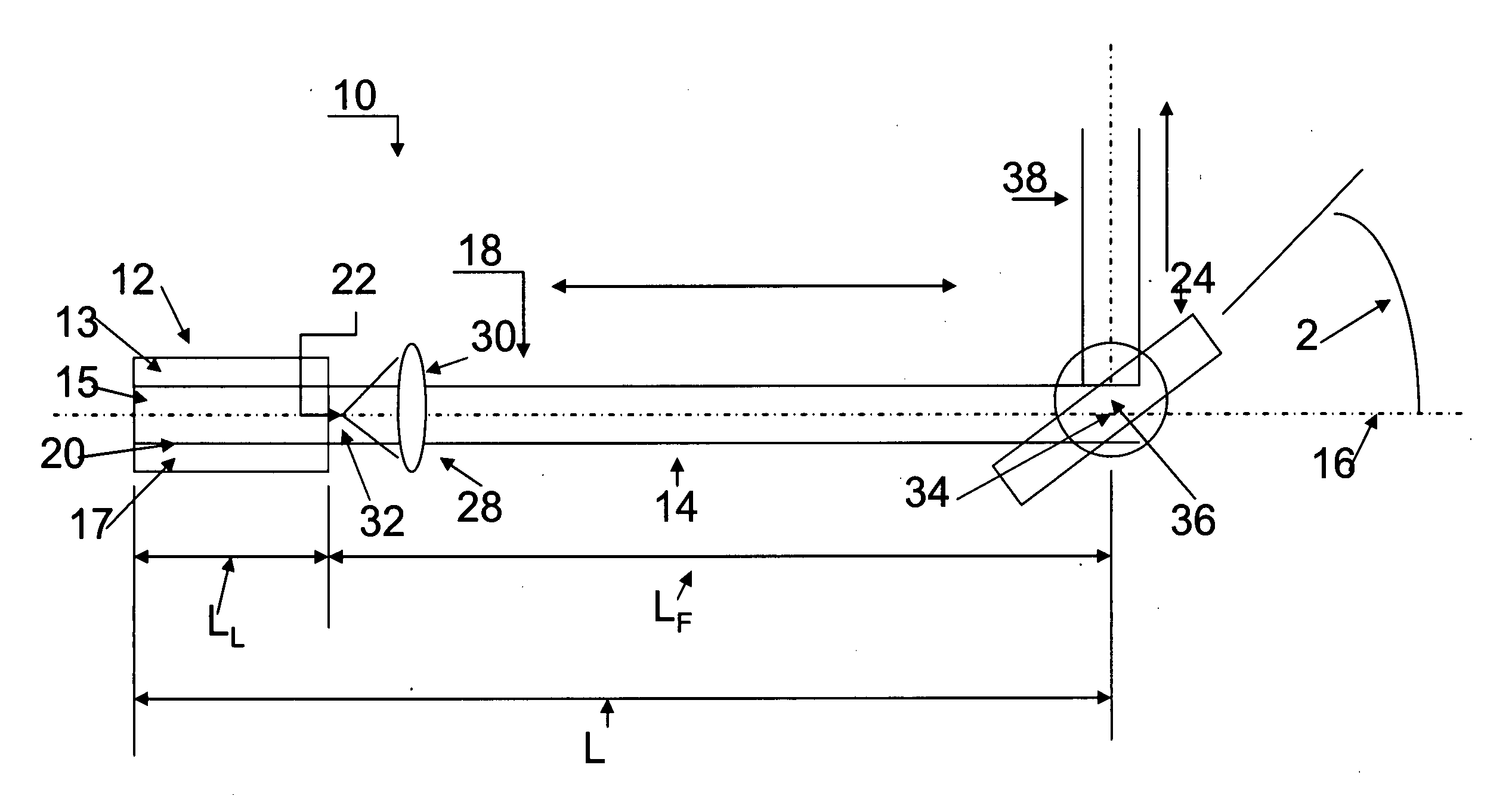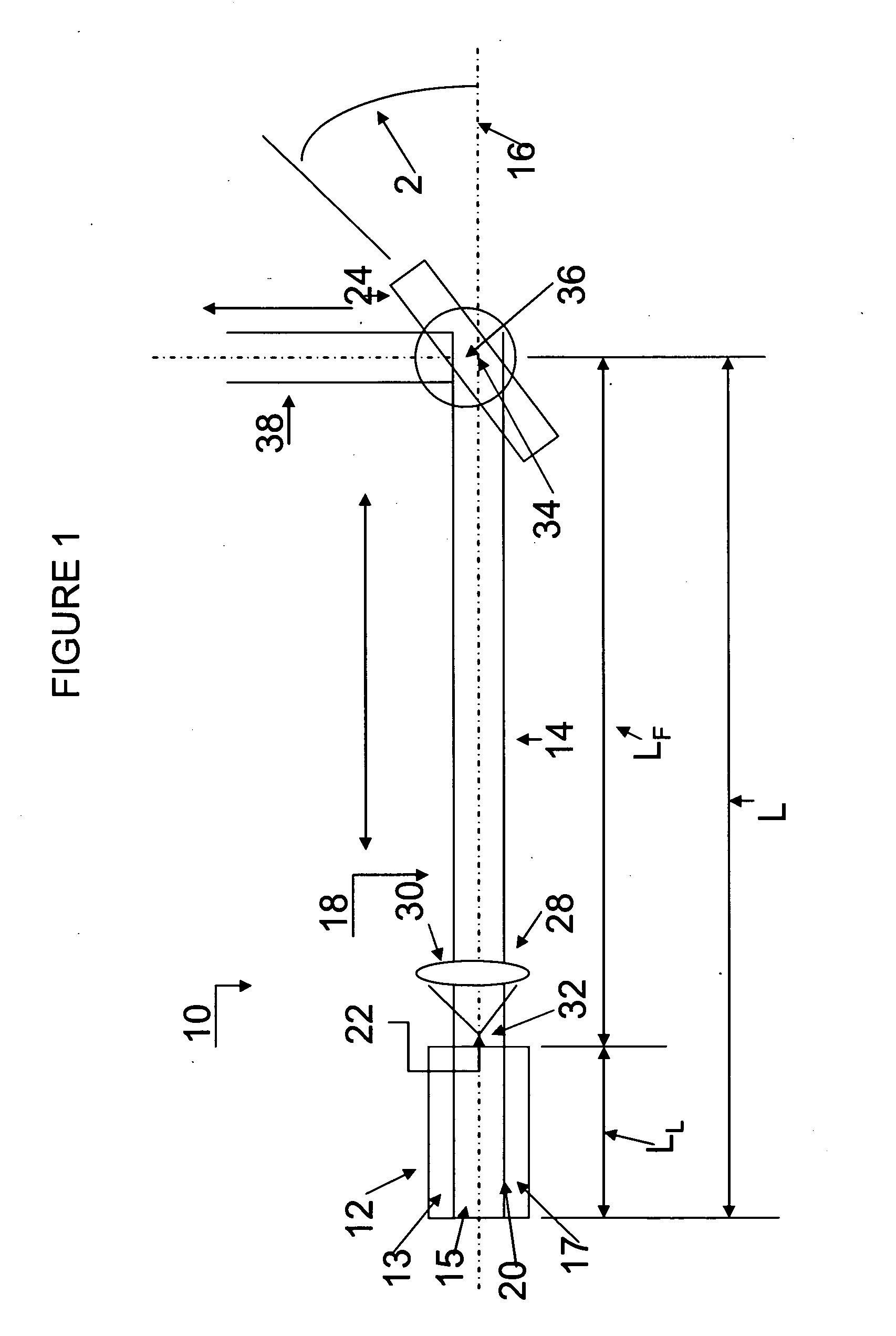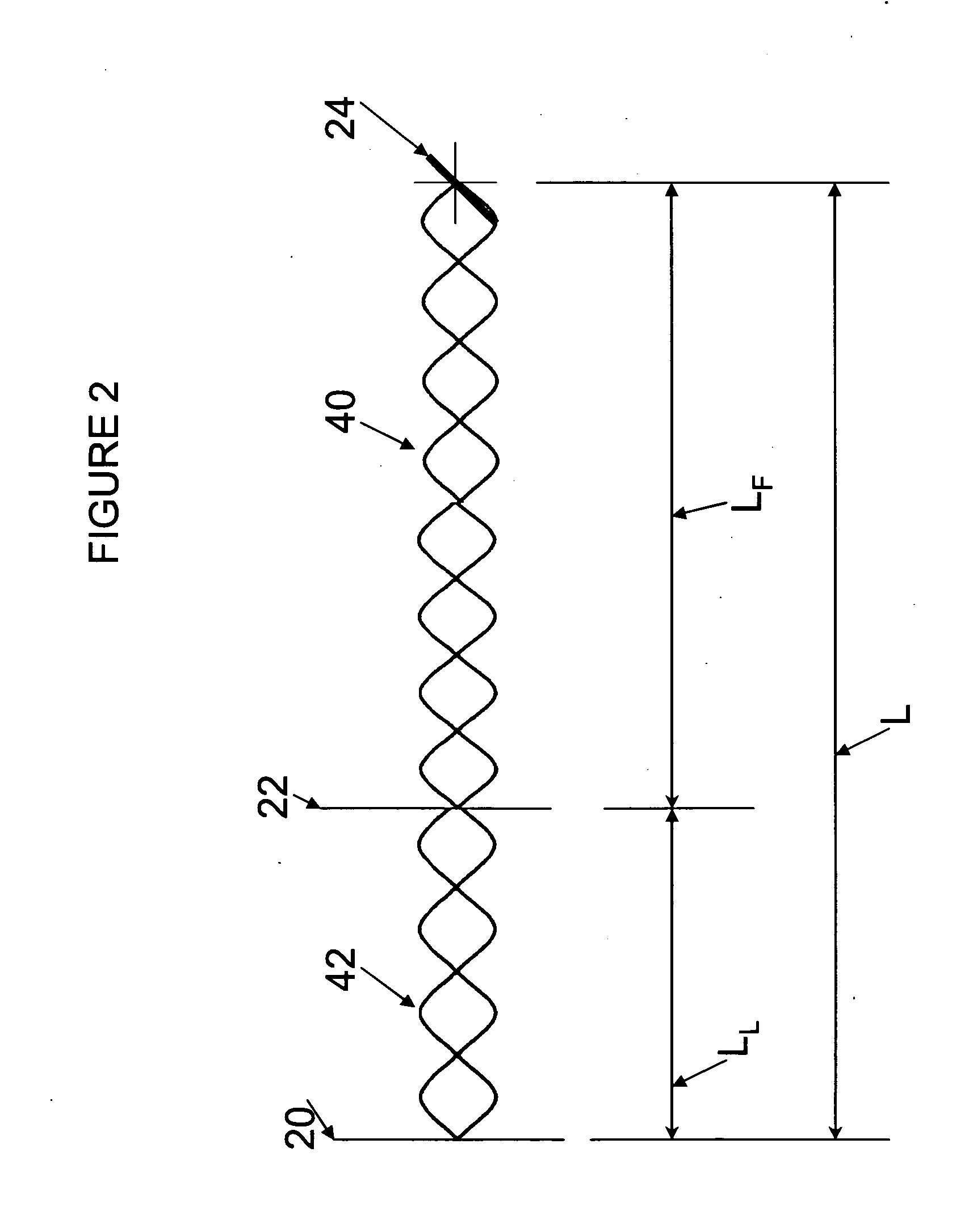Mode-matching system for tunable external cavity laser
a laser and mode matching technology, applied in the direction of laser details, laser optical resonator construction, semiconductor lasers, etc., can solve the problems of limiting the frequency range that still safely, the frequency output is especially unstable, and the diffraction grating has limited the diffraction range available, so as to achieve the effect of improving spectral purity
- Summary
- Abstract
- Description
- Claims
- Application Information
AI Technical Summary
Benefits of technology
Problems solved by technology
Method used
Image
Examples
Embodiment Construction
[0031]As shown in FIG. 1 a laser 10, which is preferably a semiconductor diode laser, includes a lasing cavity 12 and an adjoining feedback cavity 14 aligned along a common optical axis 16. Together, the cavities 12 and 14 form an external cavity 18.
[0032]The lasing cavity 12 contains a lasing medium (an active layer) 15 sandwiched between two electrically biased regions 13 and 17 (e.g., p and n regions) and has a fixed length along the optical axis 16 between a reflective back surface 20 and a reflective front surface 22 located at opposite ends of the lasing cavity 12. The gain is such for conventional laser diodes that the front surface 22 requires only a small reflectivity (e.g., approximately 4 percent) to support resonant frequency modes. The feedback cavity 14, which is filled with air, has a fixed length between the front surface 22 of the lasing cavity 12 and a pivotable reflective surface 24 located at an opposite end of the feedback cavity 14. A collimating lens 28 forms ...
PUM
 Login to View More
Login to View More Abstract
Description
Claims
Application Information
 Login to View More
Login to View More - R&D
- Intellectual Property
- Life Sciences
- Materials
- Tech Scout
- Unparalleled Data Quality
- Higher Quality Content
- 60% Fewer Hallucinations
Browse by: Latest US Patents, China's latest patents, Technical Efficacy Thesaurus, Application Domain, Technology Topic, Popular Technical Reports.
© 2025 PatSnap. All rights reserved.Legal|Privacy policy|Modern Slavery Act Transparency Statement|Sitemap|About US| Contact US: help@patsnap.com



